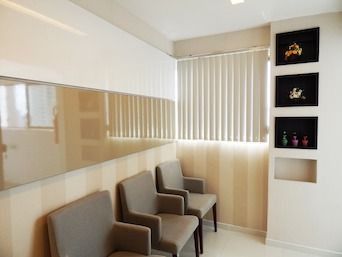How to Build Loyalty in Your Waiting Room
Buster’s experience at the veterinary hospital matters, but his owner’s experience matters even more. Don’t disappoint your clients with long, boring wait times. Build loyalty instead... digitally.

As the veterinary industry continues to experience exponential growth, competition among practices has skyrocketed. To gain new clients — and keep existing ones — practices need to understand that consumers are looking not only for quality health care for their pets but also a quality experience for themselves. And that race for quality starts in your waiting room.
According to a recent survey, the average person spends to 10 to 30 minutes waiting to see their own health care provider. Odds are that pet owners experience similar wait times in veterinary practices. Instead of this turning into a negative experience for your clients, use it as an opportunity to improve their overall experience.
Making a Digital Transformation on the Cheap
The waiting room experience directly correlates to the perception of care, so it’s essential that both pets and their owners enter an environment that eases anxiety, makes the most of wait times, and builds comfort and trust. A digital makeover of your waiting room space can manage client expectations and provide opportunities to educate, engage and entertain.
RELATED:
- Power-Packed Digital Marketing Strategies
- The Digital Path to Client Education and Compliance
Here are three cost-effective ways to add value for your clients before they ever even see a doctor:
1. Utilize digital check-in tools. Offering digital check-in tools can ease reception lines, maximize privacy and allow pet owners to update medical records quickly and easily. Kiosks can manage check-in and handle co-pays, forms and patient updates. You can improve the process even further with a mobile check-in option, which allows pet owners to register before arriving at the practice and receive real-time updates about wait times — a powerful tool for managing expectations.

Instead of a static screen with cable TV in your waiting room — or worse, no visual distractions at all — consider adding technology that provides customized entertainment and marketing content for a fraction of the price of cable. This technology allows clients to view social media—powered content feeds from “celebrity” animals, sports teams and news sources. For example, Oz Animal Hospital in Chicago, Illinois features its clients’ pets on waiting room TVs and encourages other pet owners to share their own pet-related posts.
Dynamic, real-time viewing experiences like this not only help the practice improve loyalty, they also make wait times seem shorter. Digital signage can also be used to showcase your staff, announce upcoming events or other hospital news, and promote pet health and well-being. Digital magazines are a great option, too. Just pre-load the magazines onto tablets along with games and other entertainment to help clients pass the time while waiting.
3. Keep clients online. Today, not being able to access mobile data or having a dead battery can make waiting seem interminable. Offering perks such as free Wi-Fi (with clearly displayed log-in details), accessible power outlets, or a branded power-charging station in the waiting room can go a long way to improving the client experience.
The Bottom Line
Waiting rooms shouldn’t be an opportunity to lose customers; they should be a chance to build trust and loyalty. Veterinary practices can get a leg up on today’s tough competition by using cost-effective technology to engage pet owners and give their hospital a modern refurbishment.
Matt Gibbs is co-founder and CMO of Upshow, which transforms waiting room TVs into social marketing displays and turns customers into advocates.